The Paradox of Preparing to Start Our Own Business
Before becoming an entrepreneur, I had a good amount of business experience on paper. I boasted over 15 years of corporate experience, including building multi-million-dollar business units at two Fortune 500 companies, leading strategy projects for a top tier management consultancy, and holding a Wharton MBA. I thought I was ready to take on the role of entrepreneur and be successful right off the bat.
Those experiences, however, did not prepare me for running a startup. They didn’t hurt, but they certainly didn’t set me up for an easy, guaranteed win. Nothing does. The paradox of preparing to start your own business is that you cannot prepare for what will happen to your business.
The first company I built from scratch was the fitness equipment and education company Flyte Fitness (FlyteFitness.com). With a great product idea, it looked like it was going to be a slam dunk. However, I learned several lessons as the company evolved from concept stage, to prototype, to production, to selling, to profitability, to growing into a seven-figure revenue company.
Target Markets Change
I believed, based on hard data and input from top prospective buyers that our main customers would be wholesalers and gyms. I was wrong. At first, customers were mostly men. Then, with the same product, they were mostly women. I thought buyers would be young and athletic people, but I was wrong. Our core market became people in their 40s and 50s, many of whom were trying to get back in shape. In business school and in most entrepreneurship textbooks, I was told: “Find a target and gives on it. Go deep, not broad, at first.” This didn’t work for us. We had a moving target which evolved (while selling the same product) based on marketing tactics, channels, and reverberations of word of mouth. I didn’t know my market until we were selling for about a year.
Creativity Matters… A Lot
In the competitive world of B2C fitness equipment, offering a better product isn’t good enough. Even offering a better and unique product isn’t good enough. It’s critical to market the product creatively. It took us some time to find the best ways of explaining our product in a compelling and fun way to prospective buyers. It took testing and learning and tweaking. The marketing we have today is completely different from what we started with. We moved from employing the traditional fitness messaging — “get ripped and find your bikini body” — to a fun series of rap videos highlighting customers who creatively use our product. Business success is not just about good margins and product / service superiority. It requires creativity.
Tides turn quickly
With startups, there are good days and bad days. Managing the ups and downs is tough. However, experiencing them firsthand was something different entirely. Within minutes, my thoughts would go from “this company is unstoppable” to “we are gonna run out of money.” It’s crazy. A lot of factors contributing to the roller coaster ride are outside of our control. That said, the roller coaster ride is much faster early on. Over time, I learned how to keep things as stable as possible — during good times and bad.
Focus on a Few Major Goals at a Time
It’s so easy to get caught up in a laundry list of to do’s that pull you in different directions. Investors, or friends, or family may make suggestions that sound good and that we should pursue. But we must always prioritize. Every year, I set three goals for our company. These goals are specific, big, and measurable. And there are only three. I know that if we do these three things we will have a great year. It’s tough to focus with so much noise, but having three goals to focus on helps a lot. It brings clarity and makes it much more likely that the big and important things will get done.
This article was written by Avenue Group Founder Jeremy Greenberg






Leave a Comment